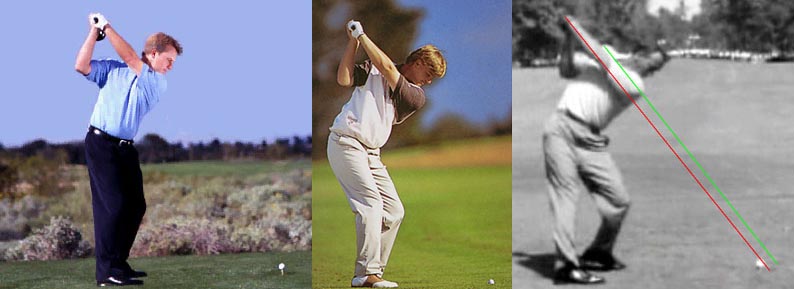johngolf33
New
When would you teach a student to use rotated shoulder plane instead of turned shoulder plane. Would a RSP tend to shourten the arm swing if someone is taking it back too far behind his head at the end of the backswing?
When would you teach a student to use rotated shoulder plane instead of turned shoulder plane. Would a RSP tend to shourten the arm swing if someone is taking it back too far behind his head at the end of the backswing?
Homer should have called it a rotated shoulder PLANE .
Do I sometimes teach a golfer a more "rotated" shoulder turn, or is old Manzella a "flat" shoulder turn only teacher?
Lots of better players get their shoulder turn TOO FLAT.
When this happens, I ABSOLUTELY get them to have more HIP SLIDE and a MORE ROTATED Shoulder Turn.
This is the only way I fix this problem, but it IS one of the ways I do.
Sounds like you are on the right track, John.
"When this happens, I ABSOLUTELY get them to have more HIP SLIDE and a MORE ROTATED Shoulder Turn."
If you get the player to have more HIP SLIDE I assume that is on the downswing? Do you have the player that uses a Rotated Shoulder Plane play the ball more forward in his stance to accommidate the added HIP SLIDE?

Jim brings up an important point. Virtually all PGA tour golfers rotate their shoulders at right angles to their spine in the backswing, and they only differ because their spine angle at address differs.

Here is a comparison of David Toms, Ernie Els and Arnold Palmer. They all rotate their shoulders approximately 90 degrees to their spine. However, their shoulder turn angle relative to the ground varies because of their varying spine angles. Only Arnold Palmer has a situation where the shoulder turn angle and left arm angle at the end-backswing hits the ground very close to the ball - although they all have a similar left arm angle relative to the ground.
I think that it is biomechanically natural/physiological to turn one's shoulders at right angles to the spine. To do otherwise (use a flat shoulder turn) requires a special effort, and I have not seen professional golfers use a flat shoulder turn (defined as being relative to the spine angle and not ground).
Jeff.
Jim brings up an important point. Virtually all PGA tour golfers rotate their shoulders at right angles to their spine in the backswing, and they only differ because their spine angle at address differs.

Here is a comparison of David Toms, Ernie Els and Arnold Palmer. They all rotate their shoulders approximately 90 degrees to their spine. However, their shoulder turn angle relative to the ground varies because of their varying spine angles. Only Arnold Palmer has a situation where the shoulder turn angle and left arm angle at the end-backswing hits the ground very close to the ball - although they all have a similar left arm angle relative to the ground.
I think that it is biomechanically natural/physiological to turn one's shoulders at right angles to the spine. To do otherwise (use a flat shoulder turn) requires a special effort, and I have not seen professional golfers use a flat shoulder turn (defined as being relative to the spine angle and not ground).
Jeff.
noDT.....Flat Shoulder Turn??
I think he's Rotated johngolf.
